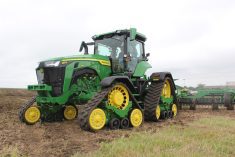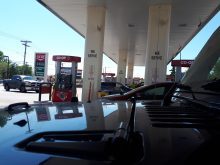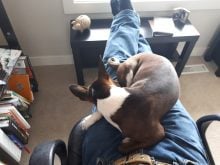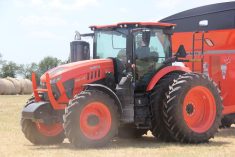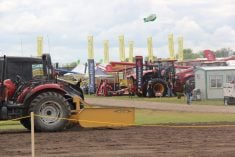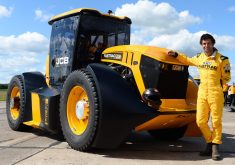Every month a variety of publications end up in my mailbox, and I usually make a point of looking through all of them. The amount of information contained in farm magazines and newspapers is incredible. When you read through one of them—especially ours (I’m bragging here)—you get to learn in a few minutes what it has taken writers and editors hours, days or weeks to find out.
But occasionally I come across something in those publications that isn’t right. I suppose that shouldn’t be surprising, writers make mistakes like anybody else. Last week I noticed just such an error. A couple of paragraphs about machinery brands in an article on why Canadian ag equipment manufacturers have been successful around the world were completely out in left field.
Read Also
Movin’ On
Me, a little dusty after a long day of equipment field testing in Texas Aside from…
Many farm machinery manufacturers, particularly the major brands, have undergone some significant changes at the corporate level over the last few decades, so it’s easy to fall behind on what’s really going on. The writer who created the article clearly hadn’t done his research.
Among the many incorrect statements that caught my attention was a reference to CNH (the parent company of Case IH and New Holland) as a “clearly American” company. In fact, the company’s proper name is CNH Global, and it’s corporate seat is in Holland. It’s a majority-owned subsidiary of Fiat Industrial S.p.A., of Italy. So, clearly American? Nope.
The article went on to mention a “Coyote” equipment brand from China as an emerging player in dry-land farming. Well, it’s pronounced Coyote, but it’s spelled Kioti; and it’s from South Korea, not China. It’s also had a North American presence since 1986, building utility and compact utility tractors that really only appeal to acreage owners. So, is it an emerging name in dry-land farming? I don’t think so.
Then the article mentioned “secondary players”, Caterpillar and AGCO, which it identified as an Italian firm. AGCO’s world headquarters are in Duluth, Georgia, not Italy. It had net sales of US $8.8 billion in 2011, making it the third-largest global ag equipment manufacturer. That’s pretty big to be called secondary.
And what about Cat? It isn’t even in the ag machinery business! That is a persistent misconception that many people seem to have. I’ve read at least one other article in the past few months that also made a reference to Cat as an ag equipment manufacturer. So let’s take a minute to clear that up right now.
In 1986, partly as a result of an R&D program designed to give its Special Applications crawlers broader appeal to farmers, Cat introduced the rubber-belted Challenger tractors; but in 2002 it sold the Challenger brand to AGCO.
In another ag-related deal, Cat had entered into a joint marketing venture with Germany-based Claas to introduce that company’s Lexion line of combines to North America, but that agreement has long since expired. And Cat is no longer a whole-goods supplier of ag equipment of any kind. And by all indications it has no plans to ever become one again.
Yes, you will still find Challenger-branded equipment and Lexion combines on some Cat dealers’ lots, but they are retailing those products for AGCO and Claas, not Cat. It’s the same concept as John Deere dealers also selling Bourgault or Seed Hawk products.
Incidentally, I had the opportunity a few weeks ago to interview Glen Barton, the former CEO of Caterpillar. It was fascinating to get a little bit of an inside perspective on the rationale behind his decision to shed the Challenger from Cat’s product line.
So please, spread the word. Lets have no more talk about Cat being in the ag equipment business.
Scott




